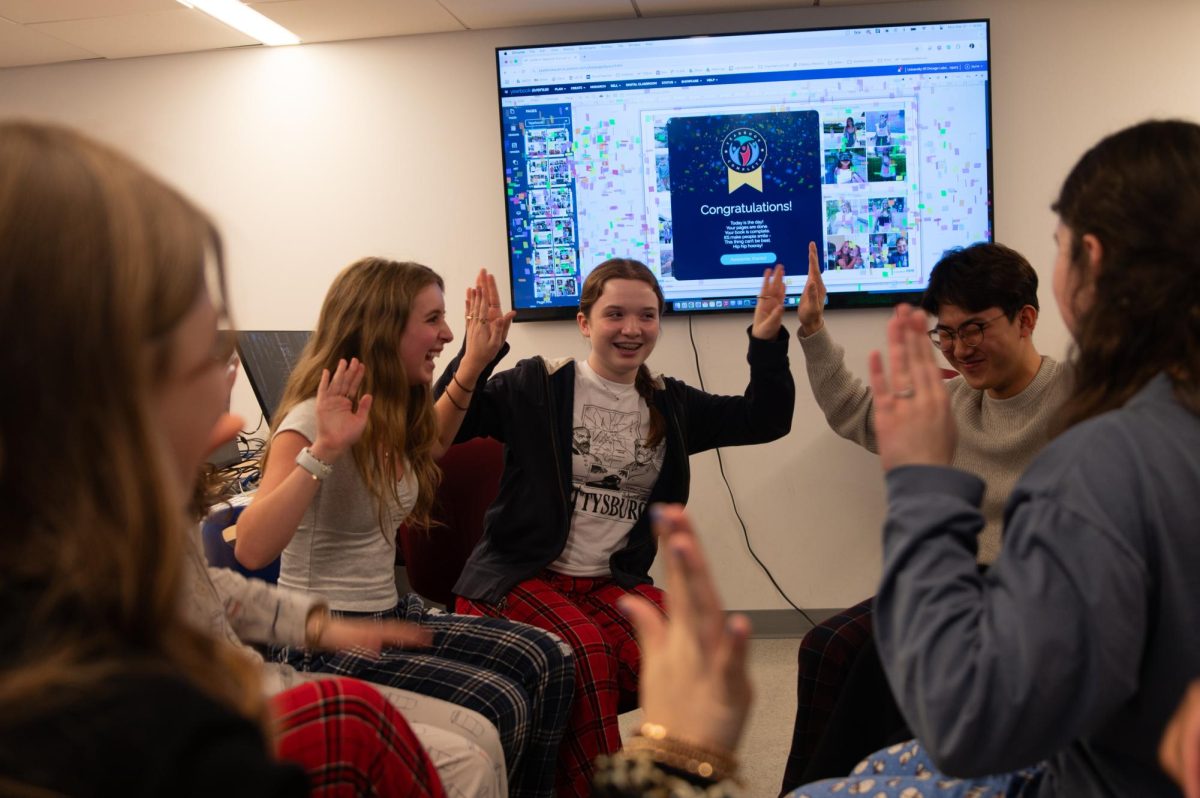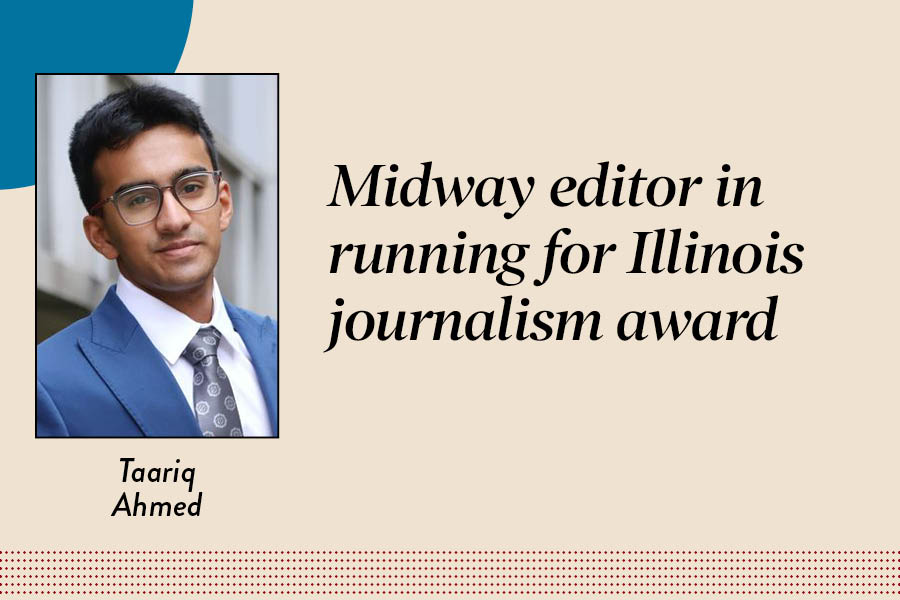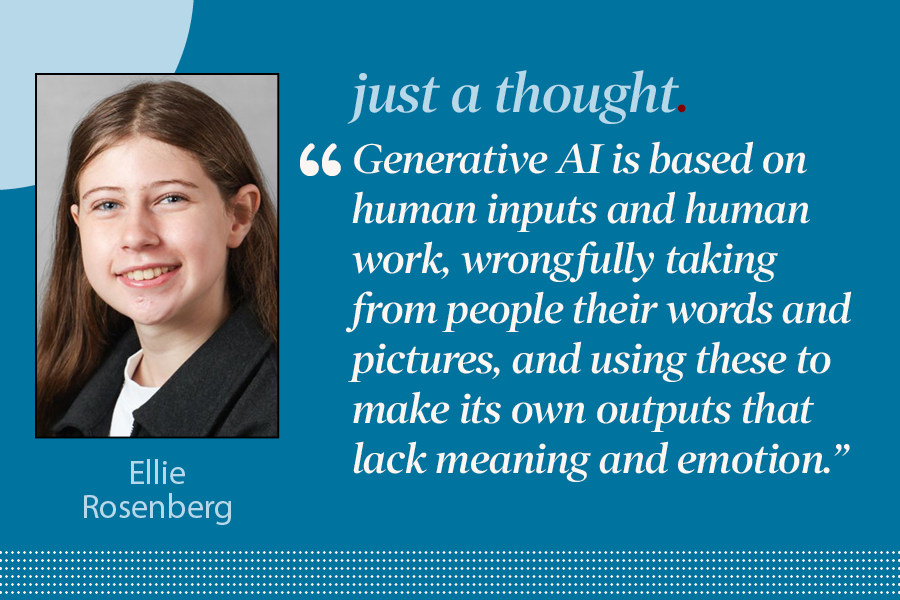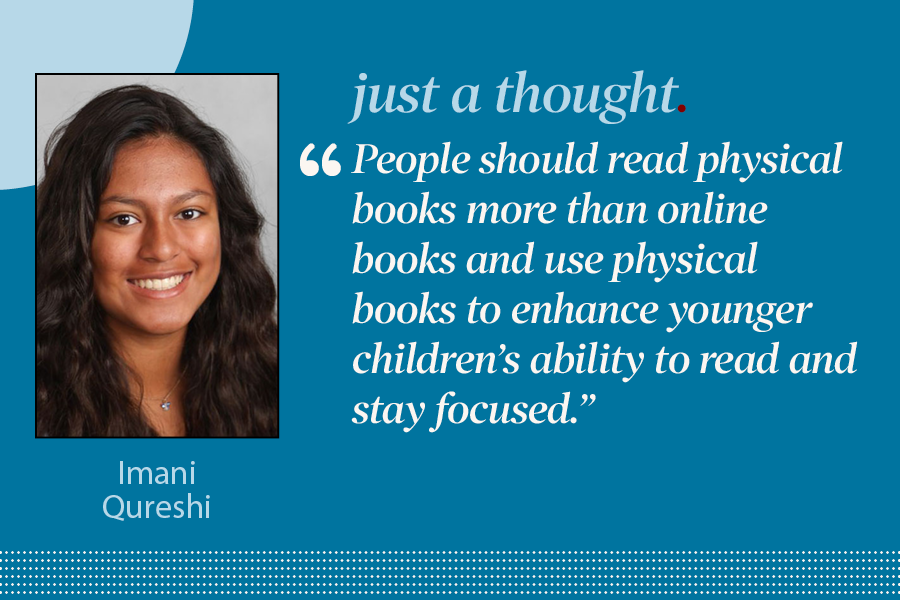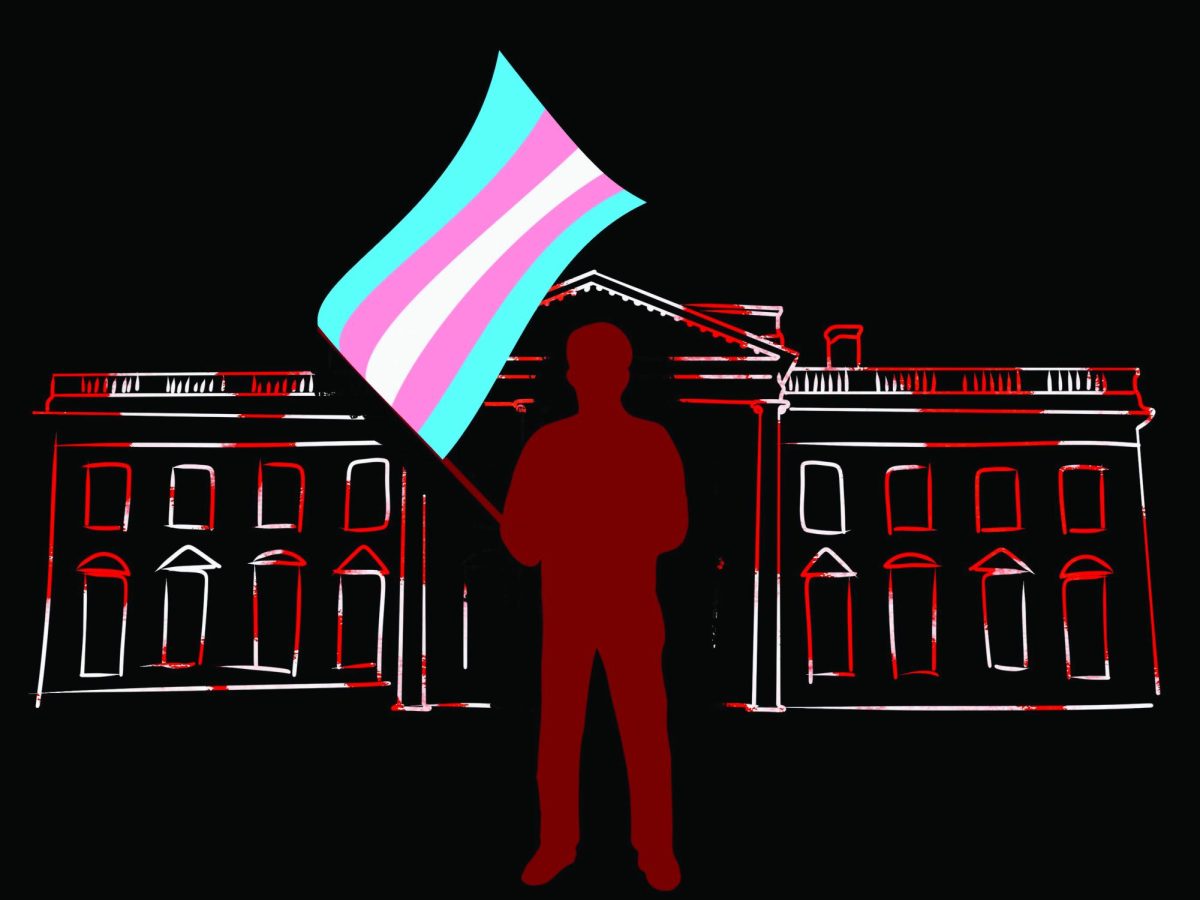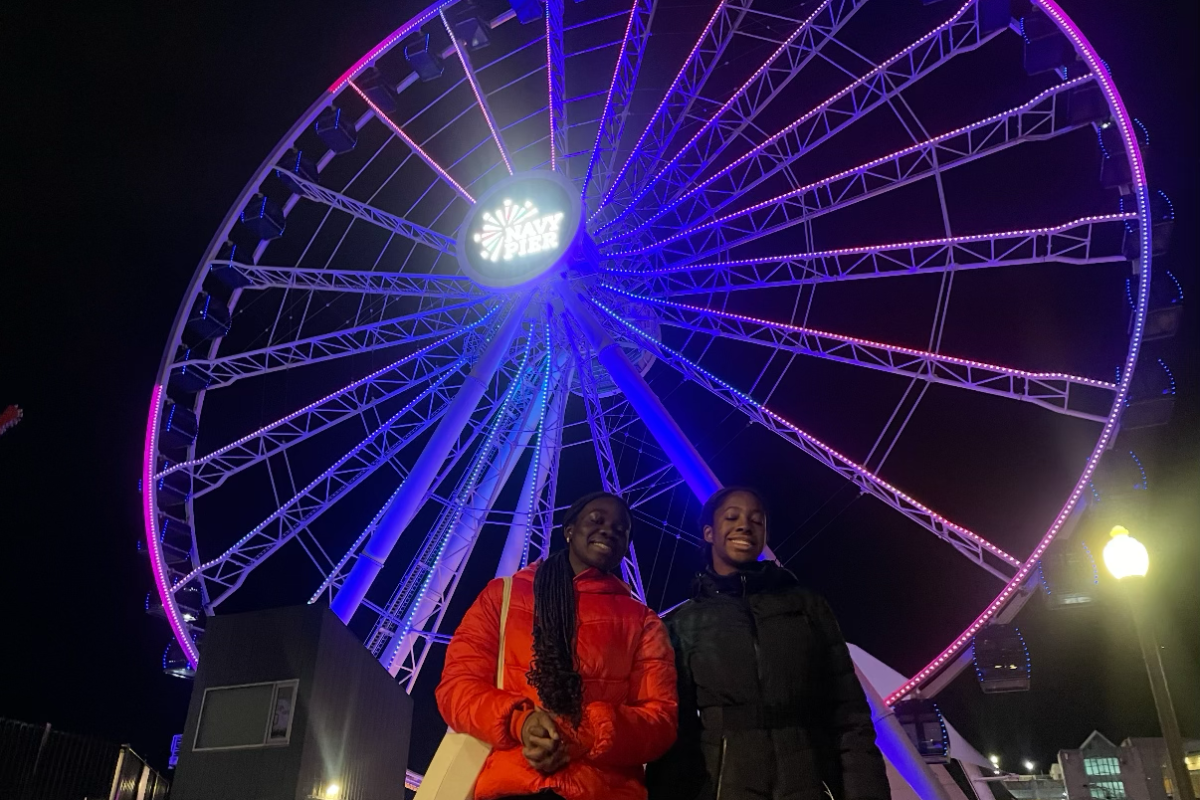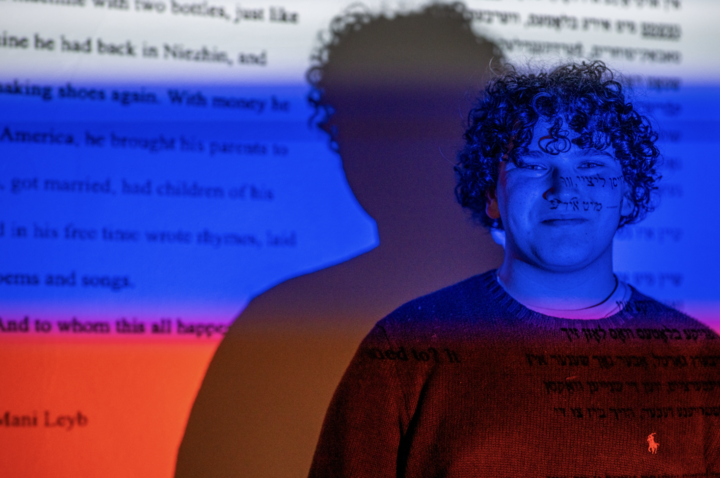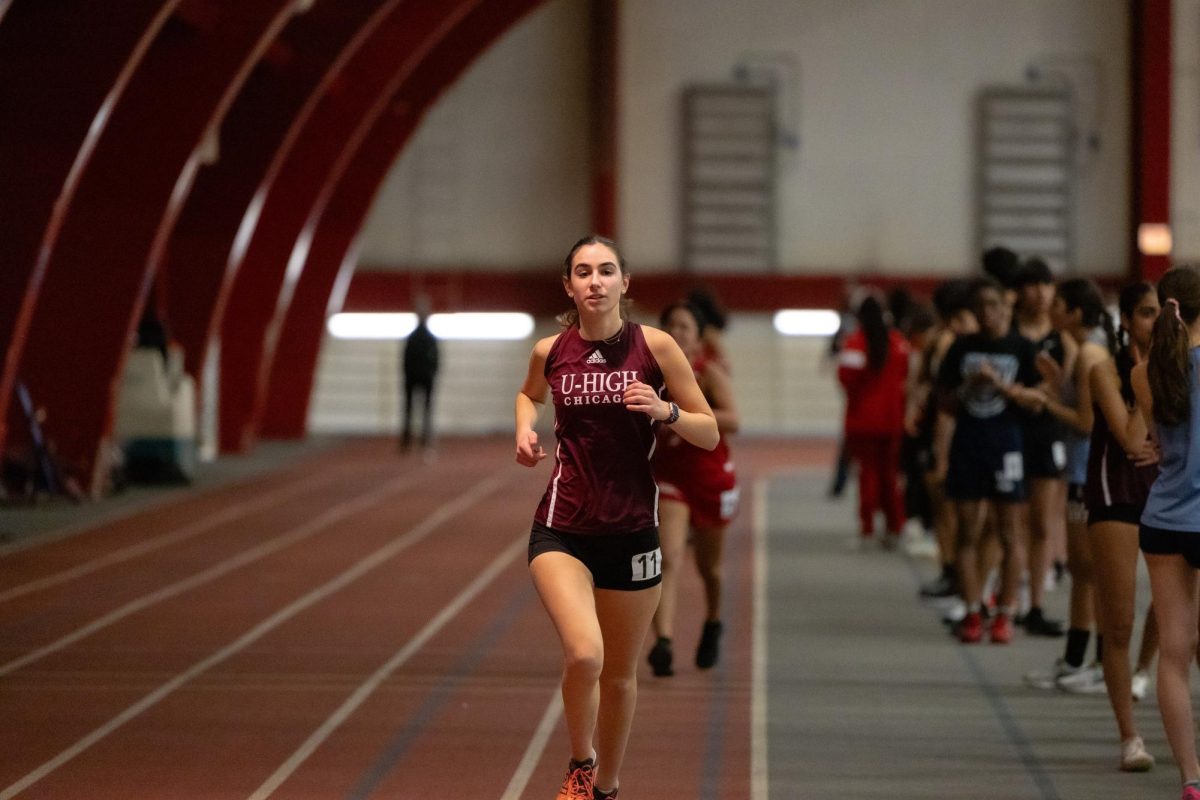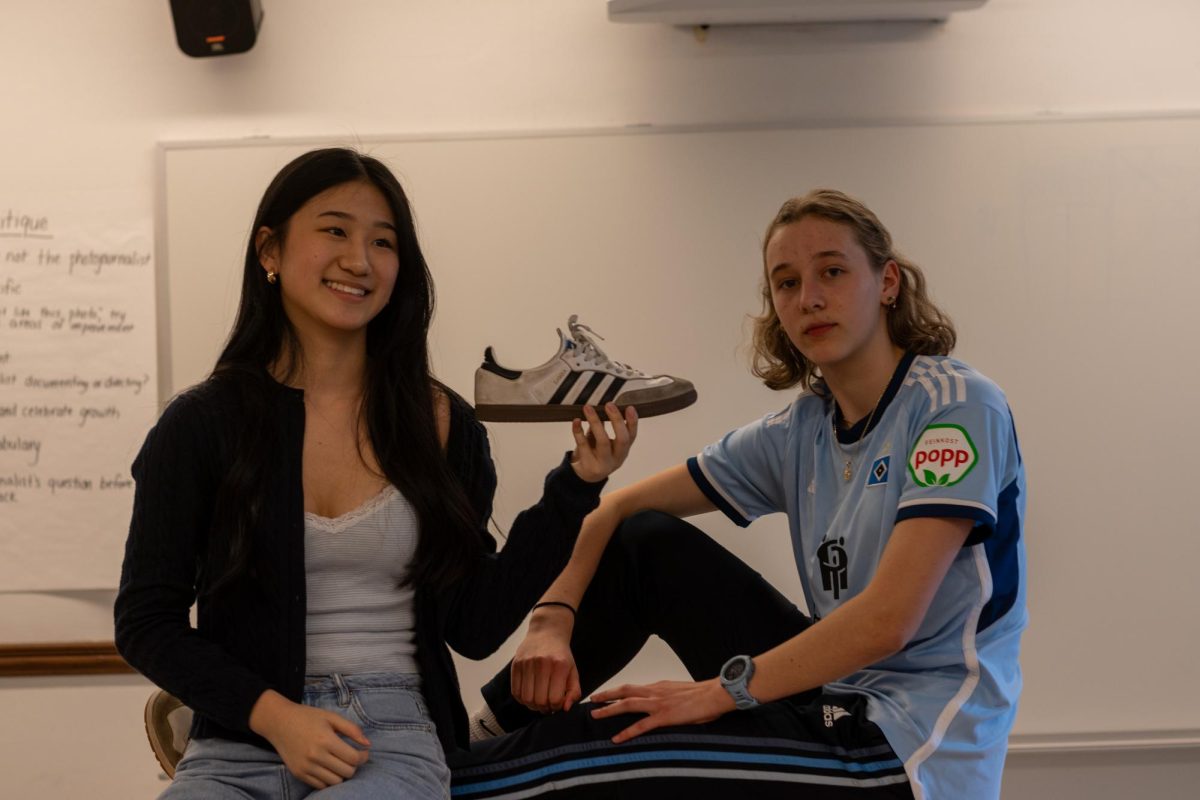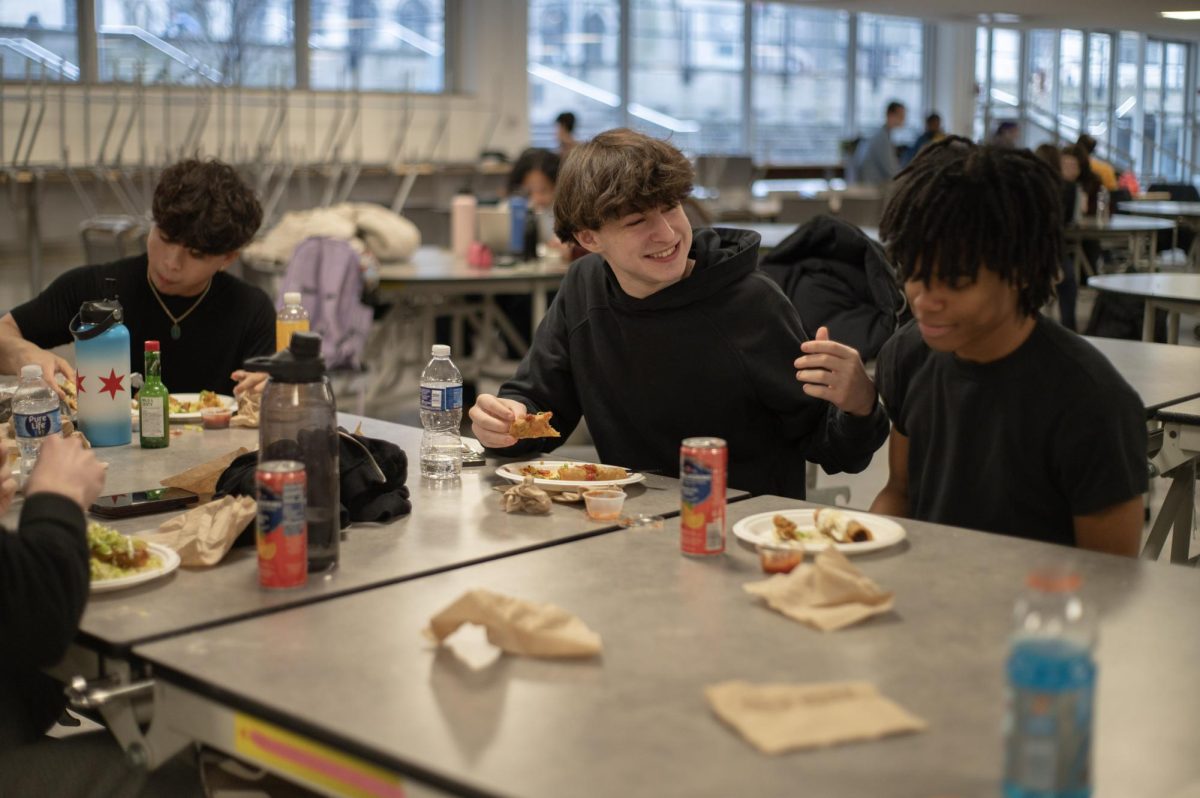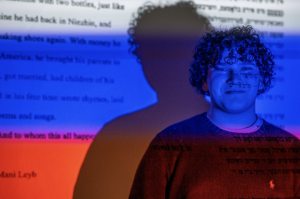Artistic conversations
Corvus Gallery exhibit questions inequality in laws.
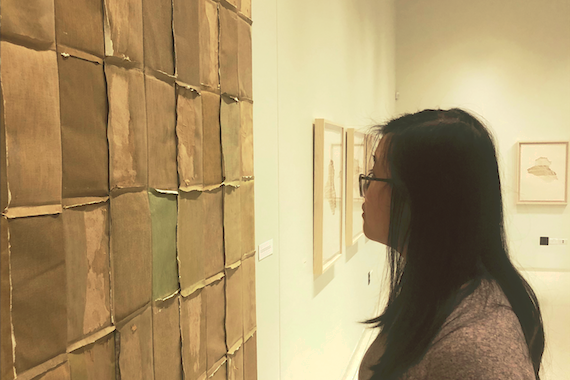
PONDERING. Olivia Pon looks at Samuel Levi Jones’ artwork “False Promises.” This quarters exhibits, “Fault Lines,” incorporates three artists’ works in a conversation about inequality.
February 16, 2019
Minimal patterns and neutral color hang from the walls inside the Corvus Gallery this winter quarter. Walking through the gallery and observing the art, one can see the many subtle details in the showcased art, not perceptible from a distance and drawing the viewer closer. However, these details emphasize deeper issues about discrimination and inconsistencies.
“Fault Lines,” the new exhibit on display through March 14 in the Gordon Parks Arts Hall gallery, includes Amanda Williams’ series of laser-cut maps of Chicago neighborhoods titled “Chicago is Iraq?” Her works join Bethany Collins’ “Birmingham News” and Samuel Levi Jones’ “Boys Club” and “False Promises.”
The three artists were commissioned by University of Chicago’s Smart Museum to create artwork currently part of the museum’s “Solidary & Solitary” exhibit. Their artwork join 1975 U-High alumna Pamela Joyner’s personal collection of art by African-American artists. Alison Gass, Dana Feitler Director of Smart Museum of Art and member of the Gallery Committee at Lab, recommended the previous works of Ms. Collins, Mr. Jones and Ms. Williams.
Gina Alicea, middle school art teacher and curator, chose the artworks to display and combine and the gallery committee grouped the gallery under a common theme, about fault lines, divisive issues or differences of opinion that have serious consequences.
“I think it really speaks to the issues of segregation and equality,” Ms. Alicea said, “and what’s happening in what’s happened for decades here in Chicago.”
The work of Ms. Williams, a 1992 U-High alumna, includes eight laser-cut maps of Chicago neighborhoods receiving the name “Chiraq,” such as Englewood, Woodlawn and Washington Park, framed by a cut out of a map of the nation of Iraq. The work highlights redlining on the south and west sides, a purposeful effort to segregate by denying African-Americans loans to those buying in certain neighborhoods. In addition, Ms. Collins’ “Birmingham News,” white-on-white embossed articles from newspapers in 1963, used language to highlight how the articles didn’t depict what was actually happening in Birmingham.
“Birmingham news was whitewashed,” Ms. Alicea said, describing the articles. “There were riots in the street, and the Birmingham news kind of ignored what was actually happening around them.”
Mr. Jones’ “Boys Club” and “False Promises,” both canvases of deconstructed law books, explore the differences between the promises laws make and if they’re creating false hope.
Outside of the gallery, videos and maps about redlining are set up for viewing, providing more context and information to the gallery. Students in Ms. Alicea’s seventh-grade class participated in the showcase by creating protest posters after learning about these issues.
“I think it’s a teachable moment,” she said. “We’ve got three contemporary artists that are addressing these issues of the laws of recording news, and how accurate is the news presented and the issues of segregation. So it’s I think it’s really important that we just take a look at how not only artists have responded but also use this as a moment to teach students about it.”

